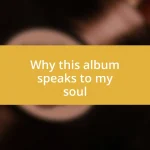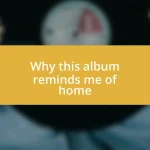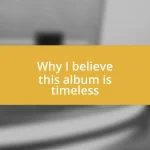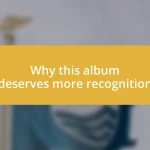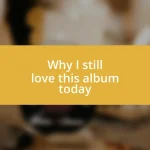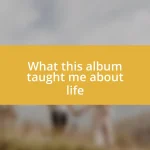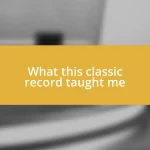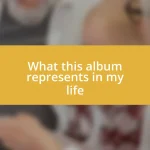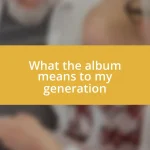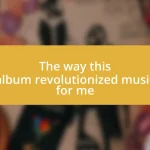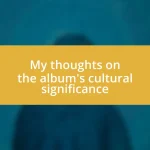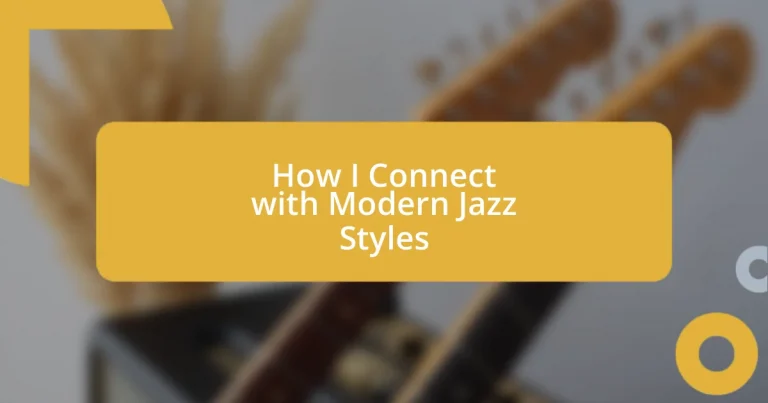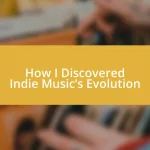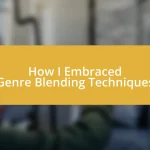Key takeaways:
- The evolution of modern jazz reflects cultural influences and individual expression, showcasing its adaptability through genres like jazz-rock and neo-soul.
- Key modern jazz artists such as Kamasi Washington and Esperanza Spalding push creative boundaries, enhancing personal connections to the genre through their unique storytelling.
- Developing a personal jazz approach involves integrating influences, engaging in improvisation, and crafting a unique sound that resonates with one’s experiences, making performances a shared journey with the audience.
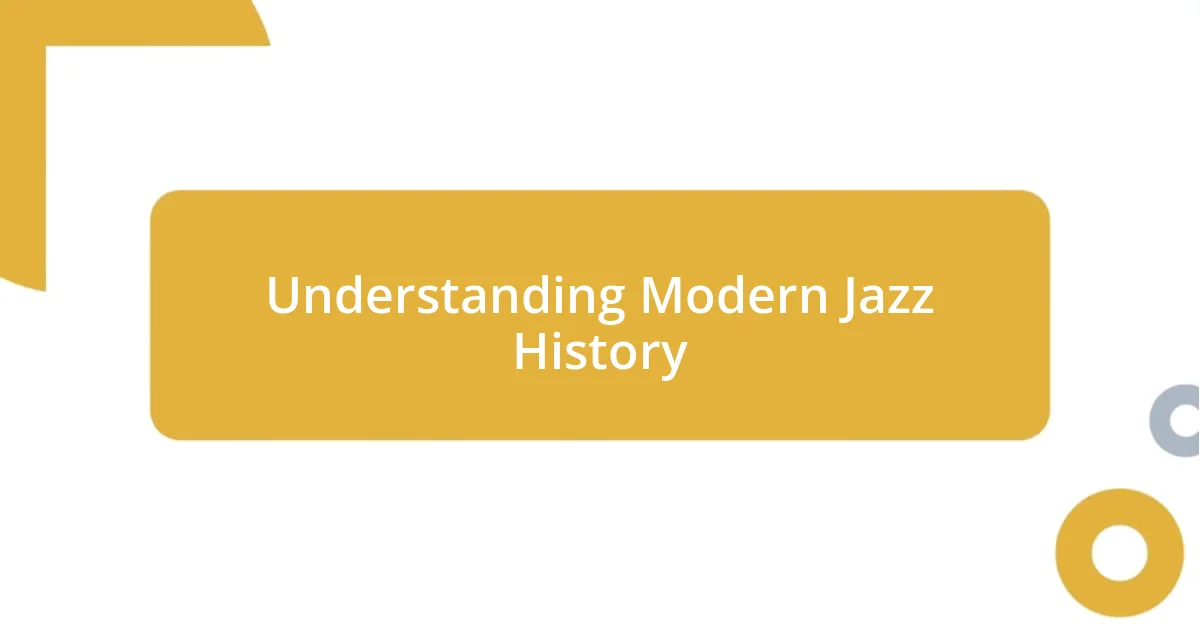
Understanding Modern Jazz History
Modern jazz history is a rich tapestry woven from various threads of cultural influences, innovation, and individual expression. I remember the first time I really immersed myself in the transition from bebop to cool jazz; it was like witnessing a conversation evolve through sound. It made me think: how did these musicians find their voice in such a rapidly changing musical landscape?
As I delved deeper, I realized that the post-war era profoundly influenced modern jazz, introducing styles that reflected societal shifts and individual experiences. The emotive power of free jazz, for instance, spoke to me—its unrestrained expressions mirrored a world grappling with chaos and creativity. It raises an intriguing question, doesn’t it? How can the raw emotion in the music shape our understanding of the human experience?
Exploring modern jazz’s evolution, I found that the fusion of genres, like jazz-rock and neo-soul, highlights the genre’s adaptability. During a recent jam session, I felt the blend of electronic elements with traditional jazz create a fresh energy—a reminder that while jazz has deep roots, it continues to grow and thrive. This dynamic evolution invites us to reflect on our personal connections to the genre; what does modern jazz mean to you?
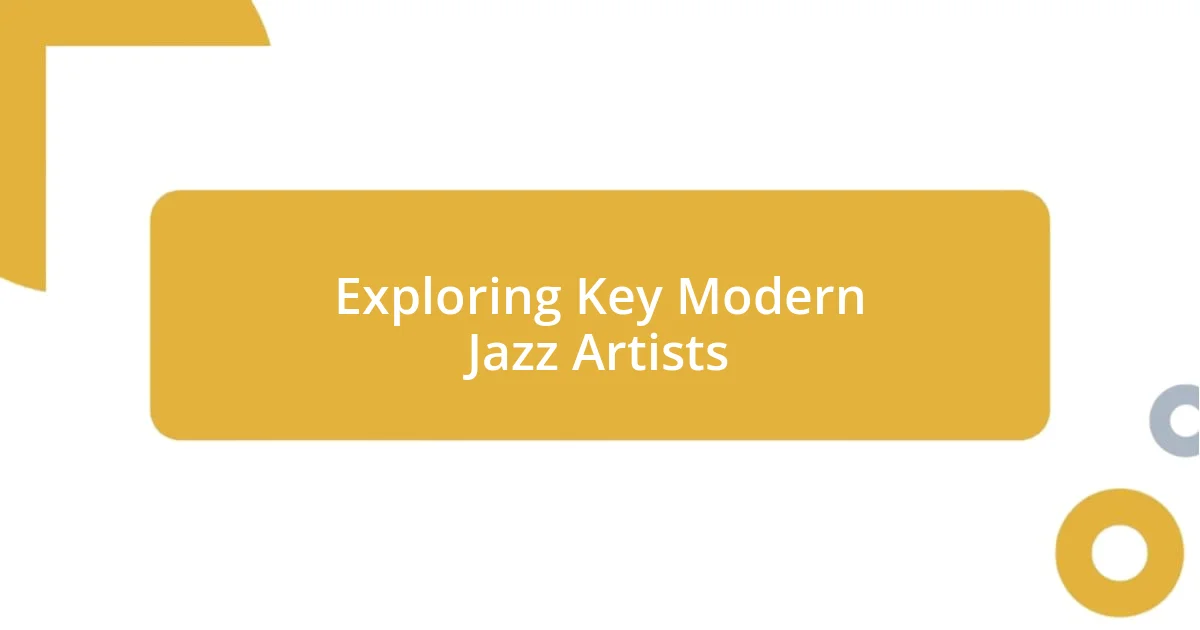
Exploring Key Modern Jazz Artists
Delving into the world of modern jazz artists, I’ve come across several musicians who have profoundly influenced my appreciation for the genre. Artists like Kamasi Washington and Esperanza Spalding bring a fresh perspective that challenges conventional boundaries. I remember attending a Kamasi concert—his saxophone resonated deep within me, mixing elements of funk with spiritual jazz, creating a soundscape that felt both familiar and new at the same time.
Here are a few key modern jazz artists who have shaped the scene:
- Kamasi Washington: Renowned for his epic album The Epic, he combines jazz with soul and hip-hop influences.
- Esperanza Spalding: A bassist and vocalist, she blends jazz with various genres, and her album Emily’s D+Evolution showcases her innovative style.
- Robert Glasper: His skillful fusion of jazz and R&B makes him a standout, particularly with the Black Radio series.
- Christian Scott aTunde Adjuah: Known for his “stretch music,” which incorporates various genres, he expands the definition of jazz.
- Thundercat: While primarily known as a bassist and producer, his work fuses jazz with funk and electronic, bringing a contemporary vibe.
Each of these artists not only pushes the boundaries of modern jazz but also resonates on a personal level with their unique storytelling through music. Engaging with their work has not only deepened my understanding but also expanded my emotional connection to the genre itself.
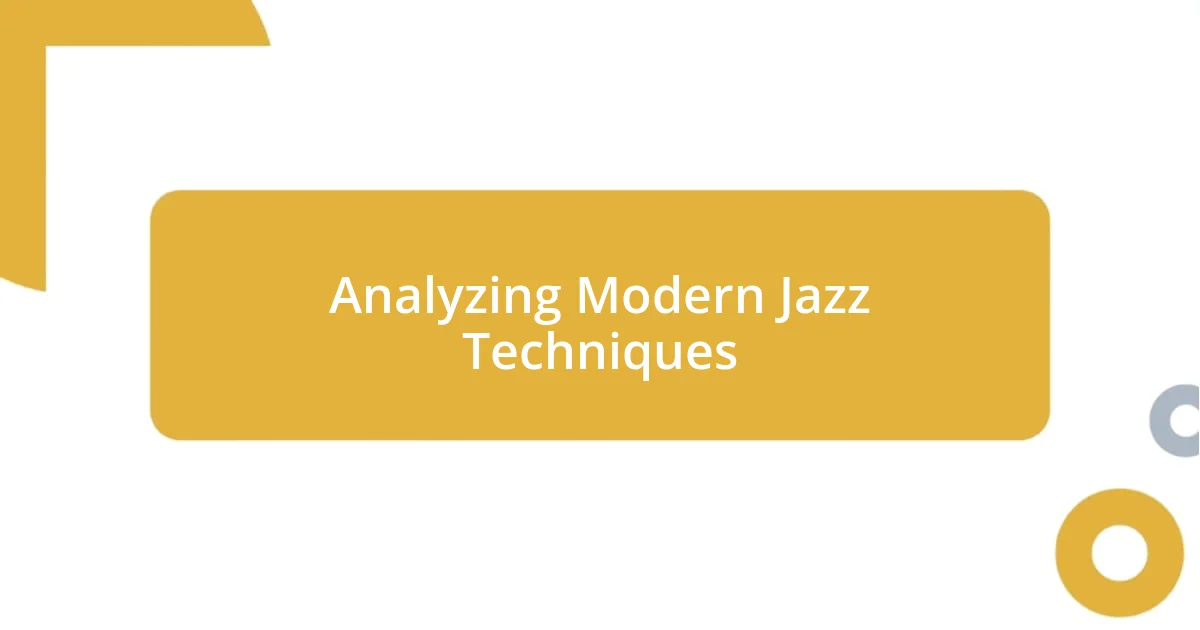
Analyzing Modern Jazz Techniques
One of the most fascinating aspects of modern jazz techniques is their emphasis on improvisation. I vividly recall participating in a collaborative jam session where musicians spontaneously created captivating dialogues through their instruments. This experience illuminated how each performer brought their perspective to the moment, showcasing the beautiful unpredictability that defines modern jazz. It’s genuinely thrilling to see how different scales and modes are used in improvisation—like the juxtaposition of the blues scale with altered dominant chords—to express individual emotions and narratives.
When I reflect on techniques like polyrhythms, I can’t help but marvel at their complexity. These rhythmic structures create a layered effect that resonates deeply within me. For instance, I’ve often listened to compositions featuring syncopated patterns interwoven with 4/4 time—an exhilarating interplay that energizes both musicians and listeners. This approach not only highlights the talent of the artists but also invites the audience into a shared experience of rhythm and movement, making the music feel palpable and alive.
The integration of technology in modern jazz has transformed how musicians experiment with sound. I once attended a performance where the artist blended live electronic effects with acoustic instruments. The result was a stunning fusion that stretched my understanding of jazz in new directions. Techniques like looping and sampling have opened up a creative space for artists to explore new textures and layers. It begs the question: how much technology can we embrace before it alters the essence of jazz? In my view, it’s not about replacing traditional elements but enhancing them to create something that resonates with today’s musical landscape.
| Technique | Description |
|---|---|
| Improvisation | Spontaneous creation during performances that reflects individual expression and emotion. |
| Polyrhythms | Complex rhythmic structures that involve two or more contrasting rhythms, creating a dynamic listening experience. |
| Use of Technology | Incorporating electronic elements and effects to expand soundscapes and redefine traditional jazz. |
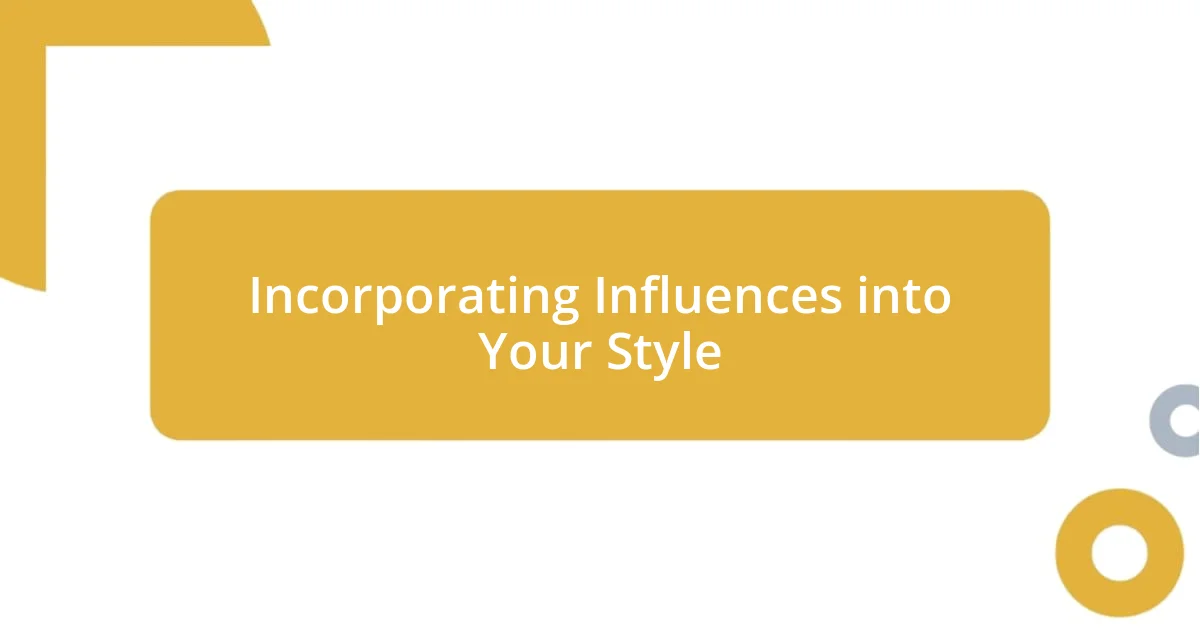
Incorporating Influences into Your Style
Incorporating influences into my own style feels less like copying and more like an act of creation. I remember the first time I attempted to blend the smoothness of Robert Glasper’s R&B-infused jazz with my own playing. I was nervous, but as I let myself experiment with those rich harmonies, I felt something click. It’s such a rewarding experience to borrow elements from different artists, crafting a sound that reflects who you are.
Every time I explore a new artist, I find pieces of myself being shaped. Whether it’s the intricate phrasing of Esperanza Spalding or the bold, boundary-pushing sounds of Christian Scott aTunde Adjuah, I absorb their influences like a sponge. My own compositions began to shift—infusing a rhythmic complexity that felt exhilarating yet daunting. It makes me wonder: how can our personal histories and experiences color the way we interpret others’ styles? The truth is, they absolutely do.
As I integrate these influences, I remind myself to keep my authenticity at the forefront. There was a moment during a recent performance when I courageously incorporated a Thundercat-inspired groove into my set. The adrenaline was palpable as I observed the audience’s reaction—they were with me, completely engaged. That fusion of styles had sparked something new. It highlighted the beauty of jazz: it’s not merely about replication but rather about conversation—bridging influences to nurture my own voice in the ongoing dialogue of music.
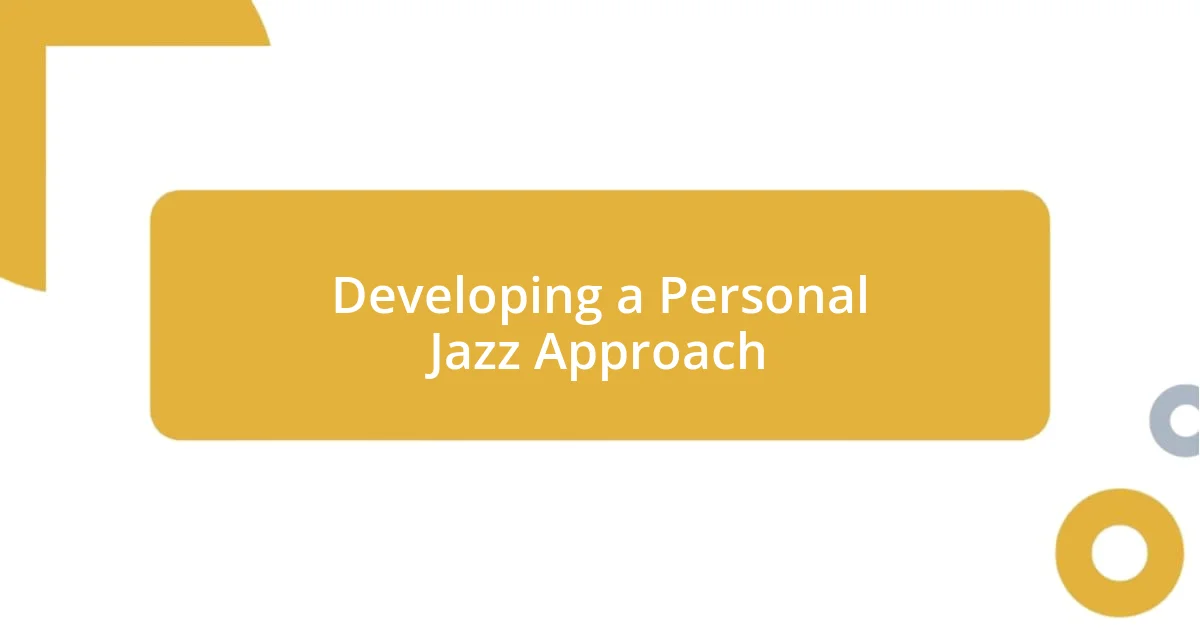
Developing a Personal Jazz Approach
Developing a personal approach to jazz has been a deeply rewarding journey for me, filled with exploration and self-discovery. I remember the first time I sat down to compose a piece that truly resonated with my personal experiences. It was a rainy afternoon, and as I let the raindrops fall mimic the rhythm of my improvisation, I felt an intimacy in the music that was entirely mine. Isn’t it incredible how a simple moment can inspire a deep connection to creativity?
As I began to refine my unique sound, I found myself experimenting with the interplay of different structures and moods. Once, during a late-night practice session, I was struck by an idea to combine soft, melancholic melodies with abrupt, striking harmonies. The push and pull of those contrasting elements mirrored the emotional tensions I often feel in life. This made me wonder: how can we use these emotional echoes to shape our jazz identities? Embracing this question has led me to explore different juxtapositions in my compositions, allowing me to express those nuances musically.
Ultimately, developing a personal jazz approach allows for a profound personal expression. I recall an outdoor performance where I decided to incorporate a spontaneous spoken word element into my set, inspired by the beat poets I admire. The response from the audience was electric—some were smiling, others appeared reflective. It dawned on me that this blend was not just about music; it was about storytelling through sound, creating an experience that blends who I am with the traditions of jazz. How can we all find that intersection between our heart and the music we create? For me, it’s about diving deep into my experiences, reflecting on them, and letting them inform my musical choices.
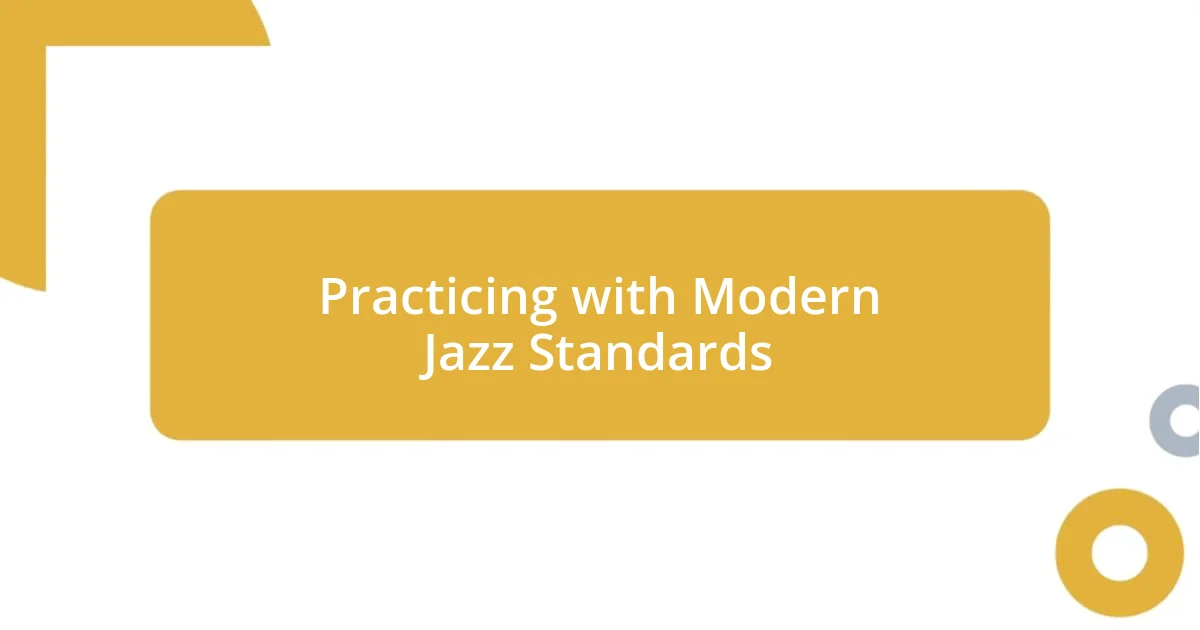
Practicing with Modern Jazz Standards
Practicing with modern jazz standards has been a breakthrough process for me. I vividly recall the first time I tackled “Lingus” by Snarky Puppy; the intricate changes felt overwhelming. Yet, as I broke it down, focusing on one section at a time, I found a sense of empowerment. Isn’t it fascinating how facing challenges in practice can lead to real growth?
What I’ve learned is that when I immerse myself in these standards, I’m not just playing notes; I’m engaging in a conversation with the music and the artists behind it. I remember a recent session where I devoted time to examining the subtle nuances of Jason Moran’s interpretations. As I delved into his rhythmic choices, I started to feel a deeper connection to the piece. It made me question: how do these nuances shape our understanding of jazz as a living art form? Each repetition brought me closer to finding my own voice within those established frameworks.
Another transformational experience occurred while working on “The Way You Look Tonight.” I decided to add my unique twist, weaving in unexpected syncopations. It was exhilarating, like painting on a vast canvas. The moment I played it for friends, their smiles told me everything. This moment made me realize that integrating personal style into modern jazz standards isn’t just about technicality; it’s an exploration of emotion and identity. How do we make a classic resonate with our current selves? For me, it’s all about infusing those standards with personal stories, transforming them into something uniquely mine.
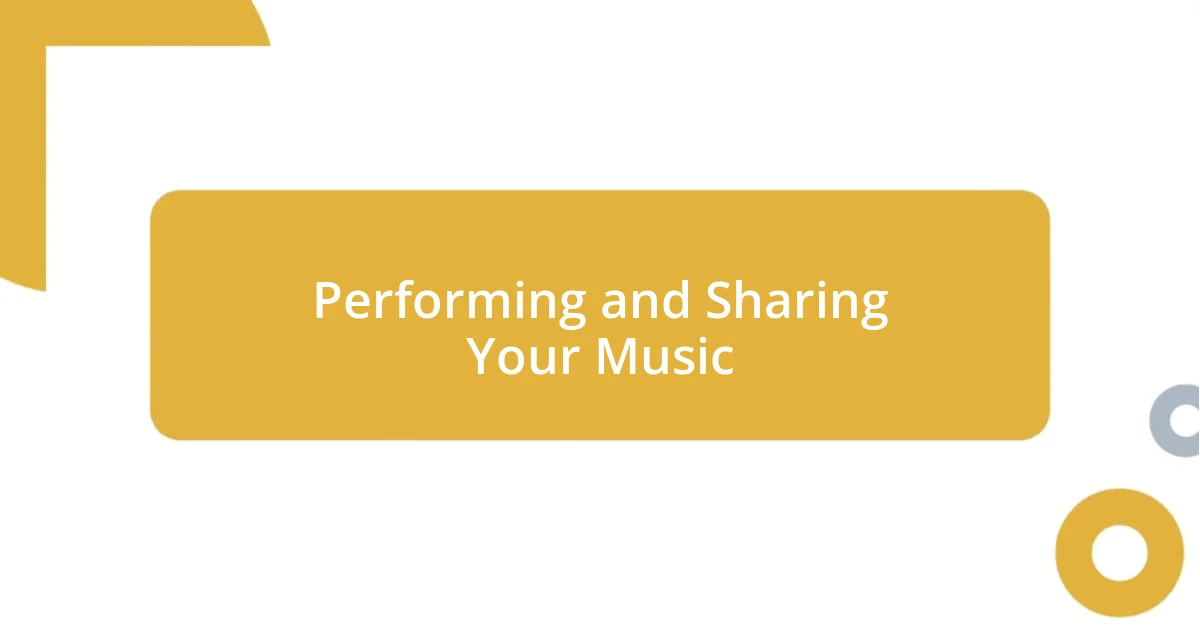
Performing and Sharing Your Music
Performing and sharing my music has always felt like an intimate conversation between me and the audience. I recall a night at a local open mic where I decided to debut a piece I’d been composing in secret. As I played, I saw heads nodding and felt a palpable energy in the room. It struck me then that sharing music isn’t just about the notes; it’s about inviting people into your world. Don’t you think that connection can be one of the most beautiful aspects of performing?
I’ve discovered that each performance is a unique opportunity to explore vulnerability and authenticity. I remember one particular gig outdoors, where the breeze danced through the trees as I played. I felt the sun warming my back, and for a moment, it was as if the music was a reflection of nature itself. I realized that sharing your music requires embracing those raw emotions—what’s the worst that could happen? Maybe you’ll touch someone else’s heart in the process.
Engaging with the audience has transformed how I approach my shows. For instance, during a recent concert, I invited some audience members to share their stories before I played. It shifted the atmosphere and created an unexpected bond. When we weave our experiences into performances, it becomes a shared journey. Isn’t that what music is all about—creating a space where our individual narratives can intertwine? For me, it reinforces the idea that music is a bridge, connecting us through our shared human experiences.
